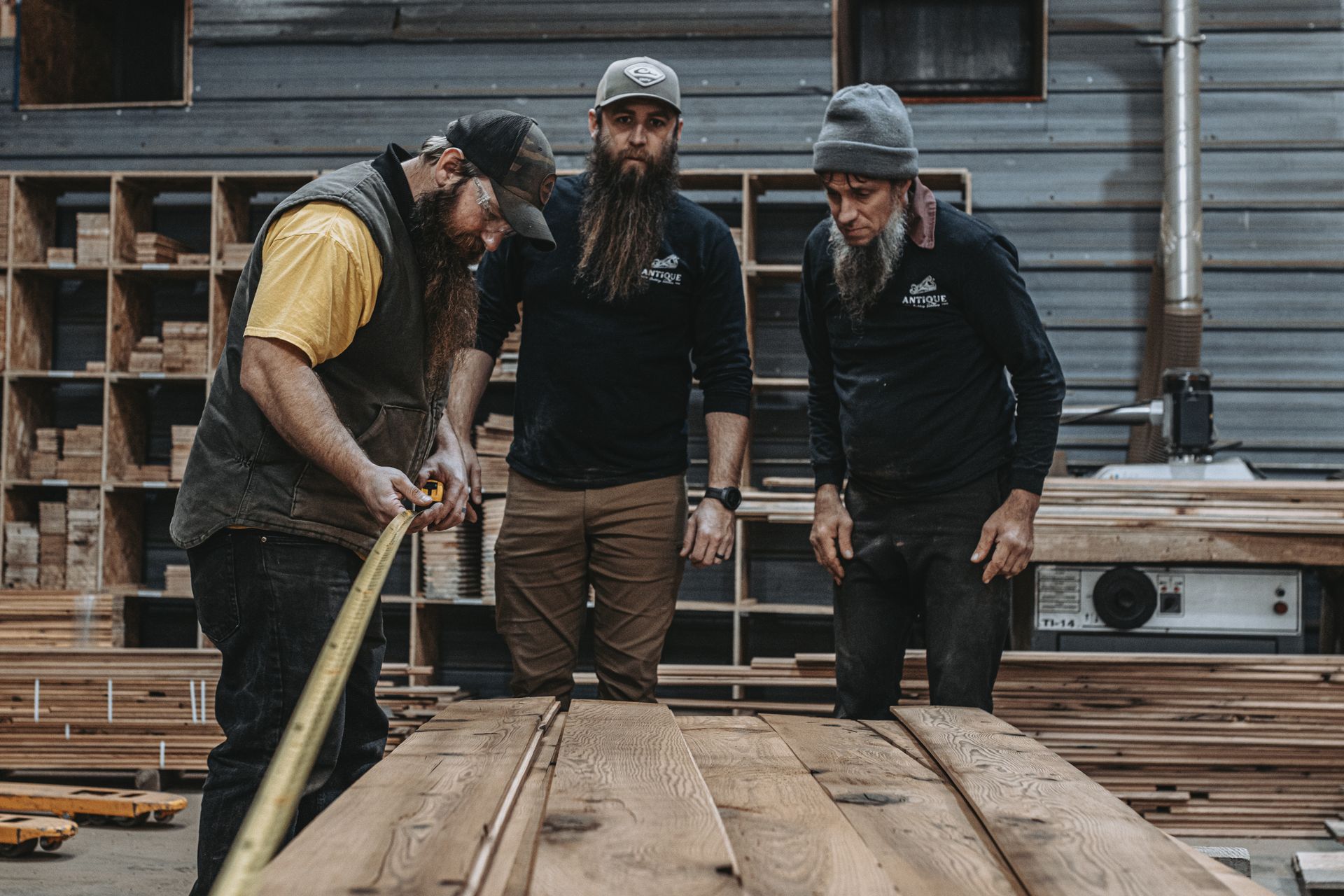The Board Foot Formula Every Woodworker Should Know
Master the board foot formula to simplify your woodworking projects.

When you're buying or working with lumber, understanding the board foot formula is a must. This simple calculation is the key to measuring lumber accurately, comparing prices, and planning your woodworking projects with confidence.
This blog will walk you through what a board foot is, how to use the formula step-by-step, and why it matters for projects big and small. We’ll also share tips for accurate lumber measurements and examples to make your calculations even easier.
By the end of this post, you’ll have all the tools you need to master lumber measurement and make smarter decisions for your next project. Let's get started!
What is a Board Foot?
A board foot is a standard way to measure lumber in North America. Think of it as a chunk of wood that's:
- 1 inch thick
- 12 inches wide
- 12 inches long
That's one board foot.
The brilliance of the board foot measurement is that it works for all shapes and sizes of lumber. For example, a 2x4 board that’s 6 feet long has the same board feet as a 1x12 board that’s 2 feet long, even though they look totally different.
The Board Foot Formula (It’s Simpler Than You Think)
Here’s the formula you’ll want to memorize:
Board Feet = (Thickness in inches × Width in inches × Length in inches) ÷ 144
The number 144 comes from multiplying 12 inches × 12 inches to represent one square foot of lumber.
A Real Example
Imagine you have a piece of wood that’s:
- 2 inches thick
- 8 inches wide
- 10 feet long (converted to 120 inches for this formula)
Plug it into the formula like this:
(2 × 8 × 120) ÷ 144 = 1,920 ÷ 144 = 13.33 board feet
That means your piece of lumber contains 13.33 board feet.
Why Knowing the Board Foot Formula Matters
1. Compare Prices Easily
Lumberyards price their wood by the board foot. Having this knowledge helps you compare prices across different dimensions and make better purchasing decisions.
2. Plan Projects Accurately
The board foot formula gives you a consistent way to calculate how much wood you’ll need for a project. Whether you’re using standard lumber or reclaimed wood, the math works the same.
3. Avoid Waste
Wood can get expensive, especially specialty or reclaimed materials. Accurate measurements keep you from buying too much (or too little) and wasting valuable resources.
Tips for Accurate Lumber Measurements
Getting the numbers right can save both time and money. Here are some quick tips:
- Round Up: Always round measurements to the nearest ¼ inch. Lumber sizes can vary slightly, and rounding up ensures you don’t come up short.
- Convert Feet to Inches First: If a board’s length is given in feet, convert it to inches before using the formula. For example, a 10-foot board is 120 inches.
- Double-Check Your Math: Mistakes happen. It’s worth rechecking your numbers, especially with lumber prices these days.
- Use a Calculator: While the math isn’t complicated, a simple calculator or app can save you from errors, especially when measuring multiple pieces.
Common Board Foot Calculations
For quick reference, here’s how the formula applies to some standard lumber sizes:
- 2×4×8 feet = 5.33 board feet
- 2×6×10 feet = 10 board feet
- 1×12×8 feet = 8 board feet
- 4×4×12 feet = 16 board feet
These calculations can make your trips to the lumberyard faster and more efficient.
Thinking Ahead
Once you’ve mastered the basics, you can use board foot calculations for project planning. Most woodworkers add 10-15% to their totals to account for waste, mistakes, or the occasional warped board that’s unusable.
For large projects, keep a running total as you select your lumber. This not only helps you stick to a budget but also ensures you have everything you need without repeated trips to buy more.
The Bottom Line
When you know how to calculate board feet, you move from guessing to planning with precision. Whether you’re building a chair, crafting a chest, or restoring an antique frame, this skill gives you control over your materials, your costs, and your projects.
At Bay & Bent, we’ve seen firsthand how powerful this knowledge is, especially in dealing with historic timbers. It’s about more than numbers; it’s about treating wood as the valuable, finite resource it is. Next time you’re planning a project, use the board foot formula to stay ahead of the game and make every piece of lumber count.
Now, grab that tape measure and calculator, and take your woodworking skills to the next level!









